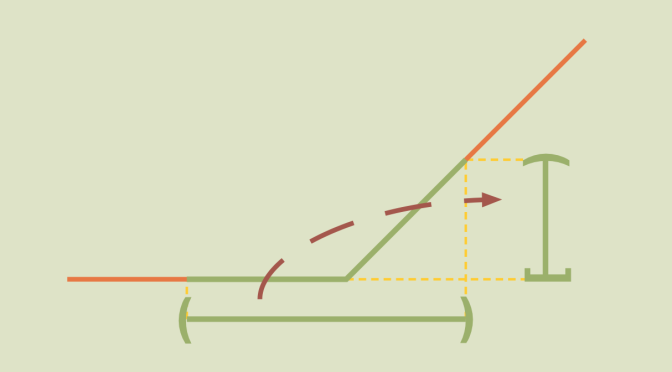We recall some definitions on open and closed maps. In topology an open map is a function between two topological spaces which maps open sets to open sets. Likewise, a closed map is a function which maps closed sets to closed sets.
For a continuous function \(f: X \mapsto Y\), the preimage \(f^{-1}(V)\) of every open set \(V \subseteq Y\) is an open set which is equivalent to the condition that the preimages of the closed sets (which are the complements of the open subsets) in \(Y\) are closed in \(X\). However, a continuous function might not be an open map or a closed map as we prove in following counterexamples.
A continuous map which is open but not closed
Consider the map:
\[\begin{array}{l|lcl}
f_1 : & \mathbb{R}^2 & \longrightarrow & \mathbb{R} \\
& (x,y) & \longmapsto & \displaystyle x\end{array}\] \(f_1\) is continuous as it is a linear mapping between two vector spaces of finite dimensions. Another way to prove \(f_1\) continuity is to notice the inequality \(\vert x_2- x _1\vert \leq \Vert (x_2,y_2) – (x_1,y_1)\Vert_1\) where \(\Vert \cdot \Vert_1\) is the \(\mathbb{R}^2\)-norm: \(\Vert(x,y)\Vert_1 \mapsto \vert x \vert + \vert y \vert\).
We now prove that \(f_1\) is open. Suppose that \(U\) is an open set of \(\mathbb{R}^2\). We have to prove that \(f_1(U)\) is open. Consider \(x = f_1((x,y))\) with \((x,y) \in U\). As \(U\) is open, we can find \(\epsilon > 0\) such that the open ball \(B_1((x,y),\epsilon)=\{(x^\prime,y^\prime) \in \mathbb{R}^2; \Vert (x^\prime,y^\prime)-(x,y) \Vert_1 < \epsilon \}\) is included in \(U\). As \(\vert x^\prime -x \vert \le \epsilon\) for \((x^\prime,y^\prime) \in B_1((x,y),\epsilon)\) the inclusion \((x-\epsilon,x+\epsilon) \subseteq f_1(U)\) holds. Hence \(f_1(U)\) is open being a neighborhood of all its elements. Finally \(f_1\) is not closed. For the prove we consider the subset \(C = \{(x, \frac{1}{x});x>0\} \subseteq \mathbb{R}^2\) and the continuous mapping \(\varphi: (x,y) \mapsto xy\) defined on \(H=\{(x,y) \in \mathbb{R}^2 ; x \ge 0\}\). \(C\) is the inverse image \(\varphi^{-1}(\{1\})\) of the closed subset \(\{1\}\). Hence \(C\) is closed in \(H\). \(C\) is also closed in \(\mathbb{R}^2\) as \(H\) is a closed subset of \(\mathbb{R}^2\). However, \(f_1(C)\) is the open ray \((0,+\infty)\).
A continuous map which is closed but not open
Let’s take the real function \(f_2\) defined as follows:
\[f_2(x) = \begin{cases} 0 & \text{if } x < 0 \\
x & \text{if } x \ge 0 \end{cases}\] \(f_2\) is clearly continuous.
For a subset \(F\) of the real line, we can write \(F=F_1 \cup F_2\) where \(F_1=F \cap (-\infty,0)\) and \(F_2=F \cap [0,+\infty)\). We have \(f_2(F)=f_2(F_1) \cup f_2(F_2)\) and \(f_2(F)=F_2\) if \(F_1=\emptyset\) whereas \(f_2(F)=\{0\} \cup F_2\) otherwise. In both cases, \(f_2(F)\) is closed if \(F\) is closed. Hence \(f_2\) is closed.
However, \(f_2\) is not open as the image of the open set \((-1,1)\) is \([0,1)\).
A continuous map which is not open nor closed
For our last conterexample, we take the sine function \(\sin\). It is well known that \(\sin\) is continuous.
\(\sin\) is not open as the image of the open interval \((0, \pi)\) is the interval \((0,1]\).
\(\sin\) is also not closed. For the proof which is left to the reader, one can consider the closed subset:
\[F=\displaystyle \bigcup_{n \in \mathbb{N}} [2n\pi + \frac{1}{n+1},2n\pi + \pi – \frac{1}{n+1}]\] of the real line and prove that its image by \(\sin\) is the interval \((0,1]\).

